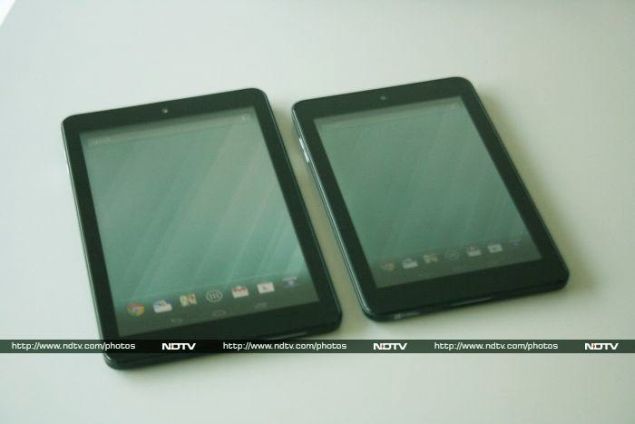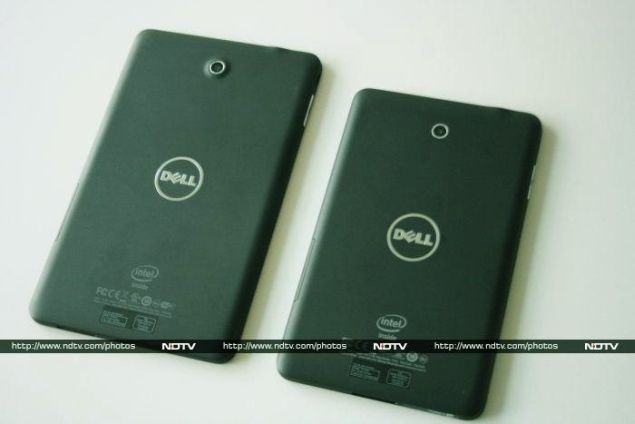 It isn’t surprising that Dell has jumped into the Android tablet fray – it’s only surprising that it took them so long to get serious about it. The PC industry’s decline is now well documented and every major player is looking to diversify into other areas. Dell first tried its hand at smartphones and tablets back in 2009, but none of its attempts since then including the original Venue, Venue Pro, XCD, Streak and Mini product lines ever amounted to much.
It isn’t surprising that Dell has jumped into the Android tablet fray – it’s only surprising that it took them so long to get serious about it. The PC industry’s decline is now well documented and every major player is looking to diversify into other areas. Dell first tried its hand at smartphones and tablets back in 2009, but none of its attempts since then including the original Venue, Venue Pro, XCD, Streak and Mini product lines ever amounted to much.
Now, after a few years of focusing on Windows-based Ultrabooks, hybrids, and all-in-one desktops,Dell is has decided to give Android another shot. The Venue brand has been resuscitated and is now being used across a line of new tablets. There are two Android-based Venues and two Windows-powered Venue Pros.
The two Android tablets are extremely similar, with the primary difference being the size of their screens. As their names suggest, the Dell Venue 7 has a 7-inch screen while the Venue 8 has an 8-inch screen. We have both of them in for review today, so let’s see how they stack up against the competition and each other.
Look and feel
The two tablets are nearly identical, apart from their sizes. The Venue 8 is obviously a little taller and wider than the Venue 7, it’s also 0.15mm thicker. Both tablets have plain glass front faces with no button markings and no branding. There’s only the small circular cutout of each device’s front-facing camera that gives you any clue about which way is up. The glass is surrounded by a tiny raised rubber ring that protects the screen when each tablet is placed face down on a table.
The back and sides are a single plastic shell, made out of soft-touch rubberised plastic. Each tablet has a large silver Dell badge right in the middle of the rear panel, with its main camera centred above it and an Intel logo along with regulatory badges below. The camera on the Venue 8 sits on a slightly raised hump while the Venue 7’s is totally flush with the body.
Both models have their microUSB charging ports and volume rockers on the upper left side. The power buttons and headset sockets are on top, and the speaker grilles are on the bottom. On the lower right edges, large flaps conceal the microSD card slots and blank spaces where SIM card slots might be found on potential future variants that support cellular data connections.
The Venue siblings have an understated, elegant look. They also feel pretty sturdy, but not like premium products in terms of either design or materials. Considering their low price, we’re quite happy with the overall look and feel.
 Features and specifications
Features and specifications
Most Android phones and tablets are powered by ARM-based processors from companies such as Qualcomm, but Dell has gone with a pair of Intel chips based on the competing X86 architecture. Intel has struggled to design processors suitable for portable battery-powered devices, so this is something of an endorsement of their latest efforts. The Venue 7 uses an Atom Z2560 running at 1.6GHz, while the Venue 8 has enough headroom for an Atom Z2580, which runs at 2GHz. These are the maximum possible speeds each chip will run at, when it isn’t throttled down to save battery power.
Both CPUs have two physical cores and Hyper-Threading, which allows four threads to run simultaneously. They also come with integrated SGX 544MP2 graphics and 1080p video acceleration. Intel claims these processors are optimised for Android in terms of performance, security and power efficiency.
Dell has outfitted each tablet with 2GB of RAM and 16GB of built-in storage. The microSD card slots support SDXC cards up to 128GB in size, which is a noteworthy first. In terms of wireless connectivity, there’s Wi-Fi b/g/n and Bluetooth 4.0. Dell doesn’t yet offer versions of these tablets with 3G data support.
The two models have very different screens. Even though they share the same resolution of 1280×800, you can tell them apart with a single glance. Colours on the Venue 7’s screen are noticeably cooler, while the Venue 8’s screen has a warm reddish tint. The Venue 7 also has a visible pixel grid pattern, which its bigger sibling doesn’t. It’s more visible when looking at the screen at an angle, when there’s bright light in the room, and especially if you’re trying to read text on a light background. Everything on the screen looks like it’s been given a linen texture. The Venue 8 also suffers from this problem, but it’s a lot milder. While the smaller tablet’s screen is sharper and has more accurate colour reproduction, the grid just kills the experience of using it.
Source: gadgets.ndtv.com








